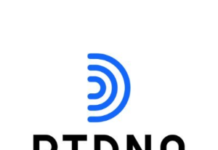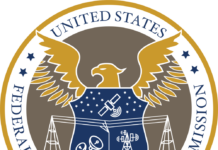
(By Bob McCurdy) Last week I had a lengthy discussion with a planner at a medium-sized agency who continues to position radio as a frequency vehicle to his clients. We exchanged perspectives and I believe we made some progress.
Viewing radio as a frequency vehicle connotes a couple of things, neither good. Either the messaging is not registering or radio’s reach is limited.
We know neither is correct. Nielsen just released their State of the Media: Audio Today 2017 study this week, which showed that 271,000,000 Americans 6+ tune to AM/FM radio weekly, and that listeners do pay attention to commercials per their ROAS studies.
While radio advertising does generate “frequency,” it is largely a byproduct of the medium’s cost efficiency rather than anything intrinsic about the medium itself. More importantly, radio’s efficiency enables an advertiser to generate unparalleled reach, when properly scheduled, which is more often than not the main driver of campaign success.
Viewing radio through a frequency prism is usually not the optimum way for an advertiser to maximize radio payback, as frequency’s relationship to successful radio campaigns is largely one of “correlation” and not “causation.” There is a big difference.
Correlation speaks to a “mutual relationship of two or more things,” i.e. air more commercials and frequency increases. Causation on the other hand speaks to “the action of producing.” While a frequency-focused campaign will produce some sales, just as all advertising will produce some sales, it will typically not produce the most sales, unless the message is unusually complex or promoting a new product intro.
There has been considerable research conducted over the years that has helped distill causation from correlation in ad campaigns, and concluded that the true marketing success driver is largely reach.
Reach x relevance = success in 2017, not frequency x relevance = success, for one simple reason: There’s an inverse relationship between relevance and frequency. The need for frequency decreases as relevance increases.
One study that comes to mind was conducted by Westwood One for an auto aftermarket client which showed that it cost 2.4x as much to generate a 1% increase in sales for those reached 3x-6x, and 3.7x as much to generate a 1% increase in sales for those reached 7+x, as it did for those reached once or twice.
Another high-profile study utilizing actual consumer purchasing data determined that households exposed to a single commercial purchased ¾ as much of a product as households exposed multiple times. Other studies have come to similar conclusions.
What these studies highlight is not that one or two exposures is “enough” but that in the short term additional frequency brings little additional benefit, as the consumer is not likely to be in the market for what’s being advertised (relevance), so reaching two potential buyers is more productive than reaching one.
One’s point of view on this subject plays a major role in the how commercials are scheduled and the results delivered.
View radio through a frequency prism and a more concentrated schedule (fewer stations and dayparts) will be aired. View it through a reach prism and a more dispersed schedule (more stations and dayparts) will be utilized. The reach-based schedule usually produces a greater ROAS, due to it reaching more consumers who happen to be in the market for what’s being advertised.
Those who are still on the fence regarding this reach/frequency debate, consider this: Assume that commercial exposure increases the likelihood of buying a product (safe assumption). And assume that one goal of marketing strategy is to minimize the time gap between each purchase occasion and each commercial exposure (being thought of in more buying situations). Doesn’t it is then follow that reducing the number of consumers reached by a campaign will result in fewer sales than one reaching more?
It’s radio’s cost efficiency and not its byproduct, frequency, that enables an advertiser to maintain a continued marketing presence that generates the greatest ROAS, when this marketing presence is scheduled to maximize reach.
Bob McCurdy is The Vice President of Sales for The Beasley Media Group and can be reached at [email protected]








Thank you, Bob, for your always knowledgeable and educated input!
Our ‘Three R’s of Results’ formula has always been Reach X Repetition X Relevance = Results.
Note that ‘Relevance’ is the last, and therefore the greatest multiplier in this formula
I think the point is right on target. I do think that in certain situations, such as a big ticket item with a long purchase cycle in a heavily competitive market, that frequency plays a larger role over time, but there is no question that reach and relevance must be the first priority of any plan. Point well made Bob.